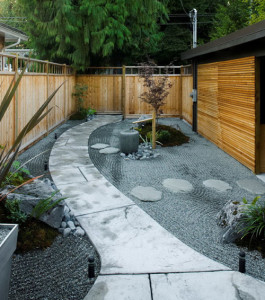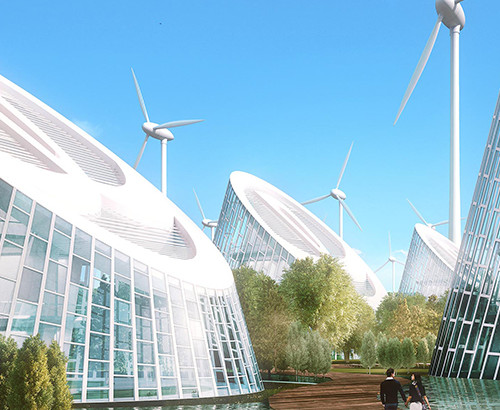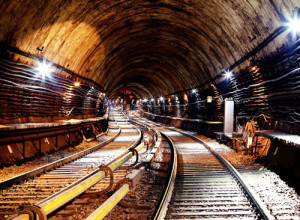Sustainable Architecture and Design, is the practice of constructing buildings using processes that are environment friendly. These structures limit their environmental impact by conserving as much energy as possible. The Sustainable design professionals focus on building designs that lays less impact on the environment as compared to the urban development. Green Construction is building in such a way that it requires less land development, more energy efficient, and use of more environment friendly materials.
Many institutions are now offering courses and degrees in the field of Sustainable Architecture and Design as this concept gained popularity with the rising environmental issues.
Job requirements
Sustainable architecture is a growing field; this opens job opportunities in the field of Sciences, Humanities and Social Sciences. Sustainable professionals promote environmental protection and social responsibility towards the environment. To build a career in the field of Sustainability Architecture and Design, a candidate must hold a credible degree. The most popular Sustainable Architecture and Design Degrees offered are:
• Bachelor of Arts or Bachelor of Science in Sustainability
• Bachelor of Architecture
• Certification in Sustainable Architecture or landscape Design, and
• Master of Science in Sustainable Design
With a degree in this field, graduates can work as professionals in architecture, landscape, design firms and building.
Along with Degree courses, a candidate must also obtain a license to go for a job in this field. It is mandatory for all states, that architects that are offering their services in public departments should be licensed by the local jurisdiction. The license is granted to the candidates that hold a professional degree, have completed an approved internship and cleared the Architect registration Examination (ARE).
Career Options
These professionals can work as Sustainable Architects, Preservation Architects and Landscape Architects with high salaries and growth options. These positions require a candidate to work from an office as well as working in the fields with the clients in the process of designing, construction and monitoring the overall designs of the structures or buildings.
With a rapid rise of concern towards the environment, this field of architecture generated a boom in the industry. Below are the most in-demand sustainability career options.
1) Sustaina ble Architects/ Consultants:
ble Architects/ Consultants:
Architects and Designers from this field will get a significant recognition and demand in the coming future. Professionals from this filed blend architectural concept with the environment. They aim to construct or build buildings with materials that are more environment friendly, also they work to design structures that require less natural resources such as water, petroleum, electricity, etc. these professionals work in both public as well as private sectors.
2) Preservation Architects:
Architects who work in the field of historical restoration may work as Preservation Architects. Mostly, the work of renovation and remodeling is carried out under this profile. These professionals, often research about the historical perspective for these designs and figure out necessary measures for renovation blending in the modern day technology. Public departments of the cities may hire these professionals when they wish to renovate historic places or monuments maintaining their historic look and appeal. They are also hired by people who own a historic home and wish to remodel it using the latest technology.
3) Environme ntal Scientists:
ntal Scientists:
These are the professionals who work in labs and research about the impact of the business or architectural activities on the environment. Their demand is likely to grow as the rise in awareness towards the environment and its preservation. Organizations and businesses may need their assistance as they move to the future projects, ensuring that they are following environmental laws and preventing environmental issues.
4) Landscape Architects:
These professionals create landscapes that are visually pleasing and have the least impact on the surrounding natural environment. These individual research about natural plant life, soil structure etc. which are required to generate the designs. They work together with clients to determine the functionality of the required design and plan to cut down the ways that may lay harmful impacts on the environment.
5) Environmental Engineers:
The demand of Environmental Engineers is expected to grow in the near future. These professionals may work for public as well as private firms across projects such as, contaminated as well as waste water treatments. They are also the leading water efficiency experts as the government bodies are now becoming concerned about efficient use of water.
6) Corporate Social Responsibility/ Sustainability Professionals:
An increasing number of firms such as Starbucks as well as Google are hiring these professionals to assist them to become more responsible and sustainable corporate citizens.
7) Green Building Professionals:
The Green Construction industry, have been offering jobs and opportunities from the past few years. Presently, this profession supports about 2 million jobs, and this number is expected to rise in the near future. These professionals assist to design, build and maintain the Green Buildings keeping in mind about their energy consumptions, waste and water systems and the surrounding landscapes.
8) Campus Sustainability Managers or Directors:
Opportunities for Sustainability Managers or Directors are growing with time and this number is likely to increase in the near future. Many educational organizations are open full time sustainability positions in an increasing number.
9) Agriculture and Food Scientists:
These are the professionals that develop eco-friendly farming practices and techniques that can feed the global world population. These individuals also research about plant based energy sources, helping agriculture and fisheries adapt to the change in climate and rising sea levels. Agriculture and Food scientists are the people that work to develop farming methods that are environment friendly.
10) Water Engineers and Scientists:
A proper management of water is the main concern behind these professionals. There are situations where there may be a lot of water- floods, hurricanes, etc. or where there is absolutely no water- draughts. These people figure out ways to manage both situations so that people may not suffer in both the conditions managing the water supply properly.
Image courtesy:
commons.wikimedia.org // www.simacor.com // www.scoop.it // www.architizer.com // www.twhereisyvette.com // www.wjmer.co.uk // www.debmoe.com // www.bidnessetc.com















